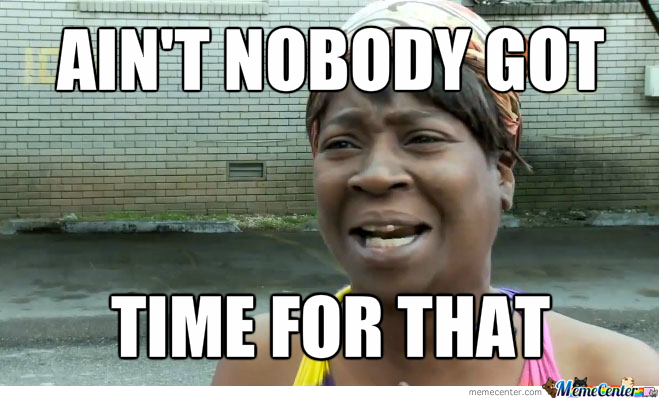It’s elegant as it is simple: Easy training is good training.
Much like we’re seduced into thinking that driving a certain car, wearing a specific perfume/cologne, or adopting certain fashion trends will lead us to greener pastures (whatever that means to you), it’s also common practice for many of us to be seduced by the “more is better” mentality when it comes to working out.
The harder, elaborate, or “sexier” our workout(s) and training program(s) are, the more results we’re going to get. And the more jacked, diesel, and, well, sexier we’re going to be.
That’s how it works…..right?

Well, Not Really
A colleague of mine sent me this tongue-in-cheek message on Facebook Messenger last week regarding one of his clients:
“I did CrossFit and got great results. I was always hurt, though.“
Relax. This isn’t going to be a rambling anti-CrossFit diatribe. There have been roughly 317 of those posted this week alone on the internet (+/- 49). I was part of that train 6-7 years ago when CrossFit was really going mainstream. In recent years, however, I feel I’ve taken a pretty agnostic stance on it as a whole.
Some boxes do “it” very well, assessing people, scaling movements based off ability level and unique injury history, and otherwise giving a shit. Others take the Sweet Brown approach:

All told, I give CrossFit a ton of credit. Nothing, and I mean nothing has done more to make barbells and lifting appreciable weight cool.
Ten years ago if someone saw me deadlifting it would have been blank stare central:
Nowadays, people see someone, anyone, deadlifitng, and they’re like “dude, you CrossFit? OMG….I do too!!!.”1
So, in all, we’ve come a long ways and I can dig it.
However, I’d be remiss not to toss a slight begrudging stone their way in that they’ve also helped “nurture” this mentality that every workout MUST to be an all out war, galvanizing the troops into an incessant “go hard or go home” mindset.
And, to some degree, this is okay.
Far be it from me to nudge people into not push themselves in the weight room. If anything, many people could use a little nudging in that direction; whether we’re referring to CrossFit or not.
That said, it’s foolhardy to believe this train of thought should be universal. All we have to do is revisit the quote from above:
“I did CrossFit and got great results. I was always hurt, though.“
To be fair, lets OMIT the “c” word and replace it with strength training, powerlifting, olympic lifting, or Jazzercising in a park.
If you’re always hurt at the expense of always making your workouts as hard as possible, are you really getting results?
Lets use a real live example: one of my own clients who I’ve only been working with for about two months.
She came to me with several issues that had been nagging her for a while: low back pain and a nasty case of Plantar fasciitis to keep it brief. We did her initial assessment and I pointed out a few “red flags” that may or may not have been the culprits: very limited ankle dorsiflexion, an inability to dissociate lumbar movement from hip movement, and a few technique snafus I felt could be cleaned up.
I wrote her program and at the end of Week #1 she reports back, “everything is going great, but my workouts seem easy.”
I explained to her that was the point. I wanted them to feel easy, in no small part to help her gain some confidence and modicum of success. That she could train pain-free and make progress.
I wanted her to be consistent with a well-structured plan that (hopefully) addressed some root causes I felt would resolve her repeated setbacks with training.
Easy Training Is Good Training
My client was on board – and still is – and has been crushing her training since. But I’d be lying if I said it still hasn’t been a bit of a mind-fuck (my words, not hers. Although, I think she’d agree with my terminology here) on her end. She’s been programmed to think that training has to be hard, that it has to be “I think I just shit my spleen, yay!” brutal in order to get results.
Even as recent as two weeks ago she was still commenting how easy some of her workouts have been.
Me: “Are you getting all of them in?”
Her: “Yes.”
Me: “Do you feel good?”
Her: “Yes.”
Me: “Are you doing more work and adding more weight?”
Her: “Yes.”
Me: “Are you in as much pain?”
Her: “No.”
Me: “Excuse me while I go toss my face into an ax.”
I’m being facetious, of course. She gets my point of view and understands her flawed way of thinking. We’re making baby-steps…..;o)
I love an analogy I stole from T-Nation contributor and overall badass, Paul Carter (albeit I’m going to put my own spin on it).
- 10% of your workouts you’re going to feel like Mick Jagger on cocaine. The weights will just fly up.
- 10% of your workouts you’re going to feel like Mick Jagger the day after. You feel like a bag of dicks. I don’t know what a bag of dicks feels like, but I can assure you it (probably) ain’t good.
- 80% of your workouts are the ones where you go in and just do the work. You show up, get your reps in, and leave. Easy peasy. <—-THESE are the workouts we should strive for and crush.
I’d argue for most people, most of the time, they should leave the gym wanting more. This is what 80% workouts are all about.
Don’t get me wrong: there’s a time and place for workouts and/or programs that exist solely to be ass-kickers and make you hate life:
- Anything with the word Sheiko in it.
- Smolnov
- MASS by Pat Davidson.
The thing to consider, though, and what many fail to recognize, is that programs like the ones mentioned above are designed to be done once a year (if that) and only for a fraction of time.
A small window of hell if you will.
They’re not designed to be done week in and week out for an extended length of time.
I mean heck, if you don’t believe me, take a deep dive into many of the most popular (strength) training programs in recent memory (5/3/1, Juggernaut, Cube Method, any of Travis Mash’s programs). If you dissect any of them you’ll find the bulk of the work being done in those programs is in the 75-85% of 1RM territory.
Nothing hardcore or “ball-busty” about it.
It’s smart training, designed to ensure people feel fresh, recovered, and ready to attack every training session without, hopefully, all the bumps and bruises along the way.
And, to take it step further, freakin Dan John and Pavel wrote a book titled Easy Strength. It’s excellent by the way.

Wrapping Up
The umbrella message here isn’t that working hard should be avoided. On the contrary, there are some people who could use a nice warm cup of “suck it up buttercup.”
Lifting weights isn’t supposed to tickle.
Nevertheless, there’s a fine line between working hard and taking it so far that it becomes more of a hinderance than anything else.
After all, in the end, you’re at the mercy of how well you allow yourself to recover.
Hard training is fine and has a place. But it’s the “easy” training that will get to where you wan to go in the long run.



